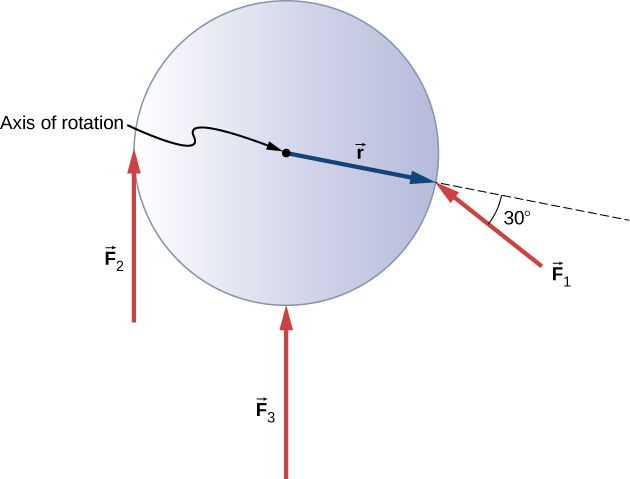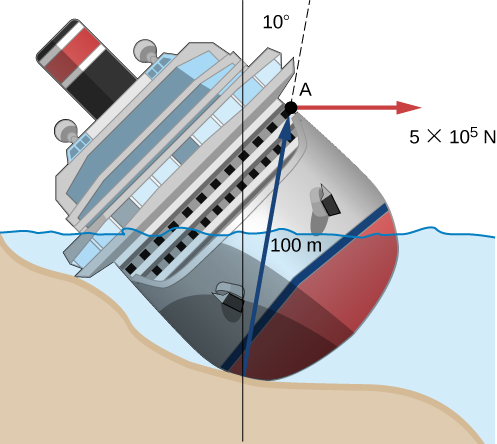| << Chapter < Page | Chapter >> Page > |

Next we look at . The angle between and is and the cross product is into the page so the torque is negative. Its value is
When we evaluate the torque due to , we see that the angle it makes with is zero so Therefore, does not produce any torque on the flywheel.
We evaluate the sum of the torques:
Check Your Understanding A large ocean-going ship runs aground near the coastline, similar to the fate of the Costa Concordia , and lies at an angle as shown below. Salvage crews must apply a torque to right the ship in order to float the vessel for transport. A force of acting at point A must be applied to right the ship. What is the torque about the point of contact of the ship with the ground ( [link] )?

The angle between the lever arm and the force vector is therefore, .
The cross product gives a negative or clockwise torque.
The torque is then .
What three factors affect the torque created by a force relative to a specific pivot point?
magnitude of the force, length of the lever arm, and angle of the lever arm and force vector
Give an example in which a small force exerts a large torque. Give another example in which a large force exerts a small torque.
When reducing the mass of a racing bike, the greatest benefit is realized from reducing the mass of the tires and wheel rims. Why does this allow a racer to achieve greater accelerations than would an identical reduction in the mass of the bicycle’s frame?
The moment of inertia of the wheels is reduced, so a smaller torque is needed to accelerate them.

Notification Switch
Would you like to follow the 'University physics volume 1' conversation and receive update notifications?